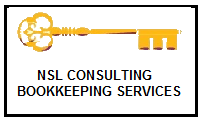To start with, you will need a good chemical testing kit, with the capability of testing for
:
Chlorine, P/H, Alkalinity, Calcium and Stabilizer levels.
Test for Chlorine and P/H on a weekly basis
Test for Alkalinity, Calcium on a monthly basis.
Test the Stabilizer level on a quarterly basis.
Chlorine - keep level at 3 ppm or above. add Chlorine tabs to the chlorinator weekly (1 or more,
depending on the size of the pool). Shock pool with liquid chlorine periodically, or if level drops below
3.
P/H - keep in range 7.2 to 7.6 ppm. To raise, add Sodium bicarbonate (1 jug at a time). To
lower, add muratic acid (1 cup at a time)
Alkalinity - keep in range 80 to 120 ppm. Raise with Sodium bicarbonate (1 jug at a time). You should
not need to lower. Check monthly & after heavy periods of rain. Note - Always correct alkalinity
before P/H (except salt pools)
Stabilizer - keep in range 50-100 ppm. Add 2-3 lbs to raise. Do not raise above 100 ppm - the only way
to lower is to drain and refill pool. Stabilizer forms an invisible UV shield to the pool water. without a
sufficient shield, the sun will strip chlorine out of the water rapidly (within day[s]), resulting in a pool
with no sanitation.
Calcium - keep in range 200 - 350 ppm for concrete pools, 350 - 450 for fiberglass pools. To
raise, add 3 lbs of calcium at a time.
Salt Pools - Chlorine is generated by converting salt. Generally, keep in range 2800 to 3200 ppm. To raise,
add a 40 lb bag of salt (pool grade) by pouring into the pool water to dissolve. Also, in salt pools, keep
stabilizer at a minimum of 100ppm.
Generally, products in pool stores designed to "up this, lower that" are very expensive. Everything can be
adjusted with chlorine (tabs or liquid), muratic acid, sodium bicarbonate (baking soda), and calcium
flakes.
I recommend Taylor chemical test kits, for accuracy and price. The following kit tests Chlorine, P/H,
Alkalinity, Calcium and Stabilizer. Also, the 7 in 1 disposable test strips :





